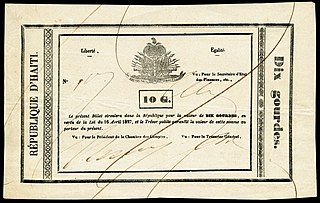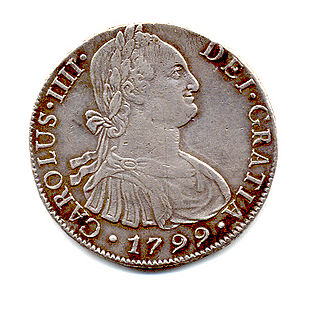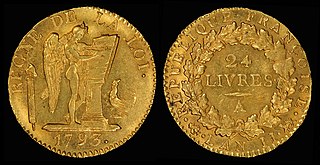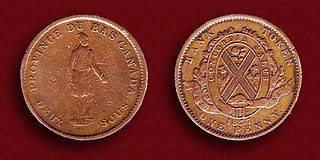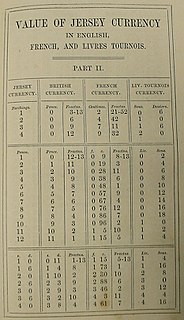This article includes a list of references, related reading or external links, but its sources remain unclear because it lacks inline citations .(April 2018) (Learn how and when to remove this template message) |
The livre was the currency of Saint Lucia until 1814. The Saint Lucia livre was a French colonial currency, distinguished by the use of various cut Spanish and Spanish colonial coins. The livre was subdivided into 20 sous , each of 12 deniers . The escalin was worth 15 sous, with the stampee worth 3 sous 9 denier (1⁄4 escalin). Until 1813, 12 escalins were equal to 8 reales (the Spanish dollar), after which 15 escalins equaled 8 reales. In 1851, sterling was introduced for circulation.

Saint Lucia is a sovereign island country in the West Indies in the eastern Caribbean Sea on the boundary with the Atlantic Ocean. The island was previously called Iyonola, the name given to the island by the native Amerindians and later, Hewanorra, the name given by the native Caribs. Part of the Lesser Antilles, it is located north/northeast of the island of Saint Vincent, northwest of Barbados and south of Martinique. It covers a land area of 617 km2 and reported a population of 165,595 in the 2010 census. Its capital is Castries.

The sol, later called a sou, is the name of a number of different coins, for accounting or payment, dating from Antiquity to today. The name is derived from the solidus. Its longevity of use anchored it in many expressions of the French language.
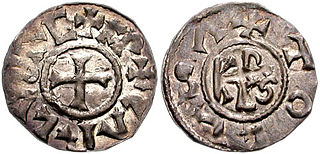
The denier or penny was a medieval coin which takes its name from the Frankish coin first issued in the late seventh century; in English it is sometimes referred to as a silver penny. Its appearance represents the end of gold coinage, which, at the start of Frankish rule, had either been Byzantine or "pseudo-imperial". Silver would be the basis for Frankish coinage from then on. The denier was minted in France and parts of the Italian peninsula for the whole of the Middle Ages, in states such as the patriarchate of Aquileia, the Kingdom of Sicily, the Republic of Genoa, the Republic of Siena, and the crusader state Kingdom of Jerusalem, among others.
Contents
Since the late 19th century, dollars have circulated on Saint Lucia, first the Saint Lucia dollar, then the British West Indies dollar, and currently the East Caribbean dollar.
The history of currency in the British colony of Saint Lucia closely follows that of the British Eastern Caribbean territories in general. Even though Queen Anne's proclamation of 1704 brought the gold standard to the West Indies, silver pieces of eight continued to form a major portion of the circulating currency right into the latter half of the nineteenth century.
The British West Indies dollar (BWI$) was the currency of British Guiana and the Eastern Caribbean territories of the British West Indies from 1949 to 1965, when it was largely replaced by the East Caribbean dollar, and was one of the currencies used in Jamaica from 1954 to 1964. The monetary policy of the currency was overseen by the British Caribbean Currency Board (BCCB). The British West Indies dollar was never used in British Honduras, the Cayman Islands, the Turks and Caicos Islands, the Bahamas, or Bermuda.
